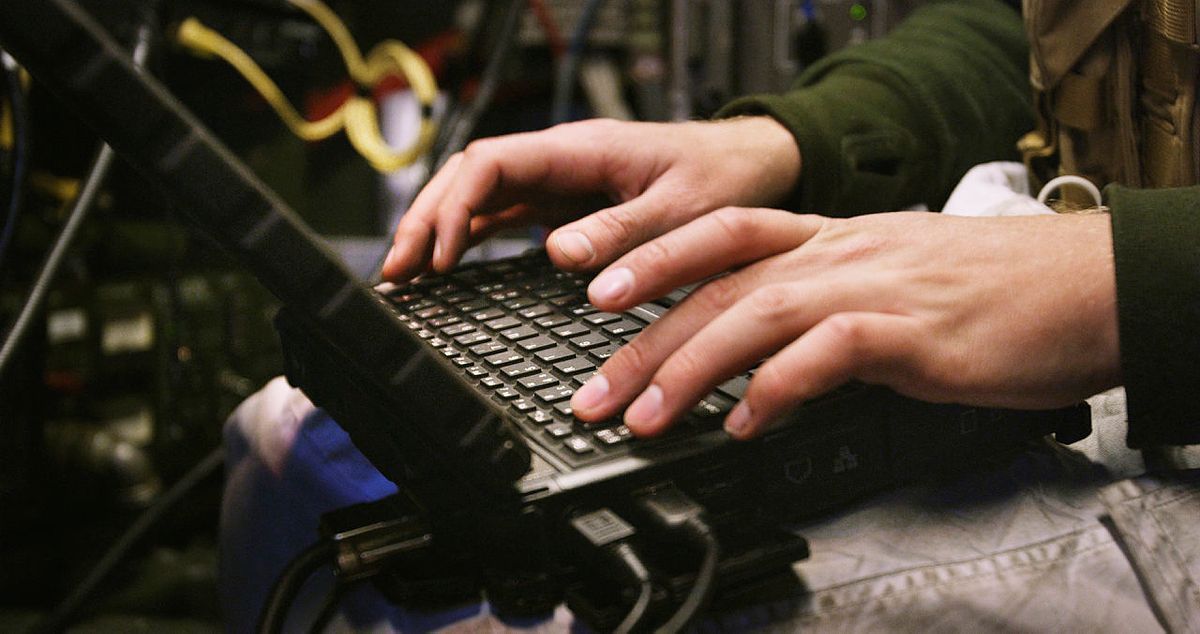On 11 April 2022 a summit—commonly referred to as “two-plus-two”—was convened between India and the US which stressed the shared commitment of both the countries to “uphold a free rules-based international order to safeguard sovereignty, territorial integrity and independence.” In the meeting the US Secretary of Defense, Lloyd J. Austin III stated that India and the US were “working together to build one of the most consequential partnerships of our time.”
The crucial meeting took place when the atmospherics in South Asia is careening out of control with Pakistan, Sri Lanka and Myanmar in the throes of grave economic and political uncertainties. Addressing China’s hostile intent in the region with an aim to “debt-trap” the countries that abut India, the “two-plus-two” underscored that both the democracies were “worried about the People’s Republic of China’s” attempt “to refashion the region.”
Operation Acharaj (“Surprise”) is a hypothetical vignette whereby a force comprised of US and Indian Special Forces along with Tibetan guerillas, the Amdos could be called upon to signal solidarity in the context of a geopolitical chess game that “two-plus-two” envisages.
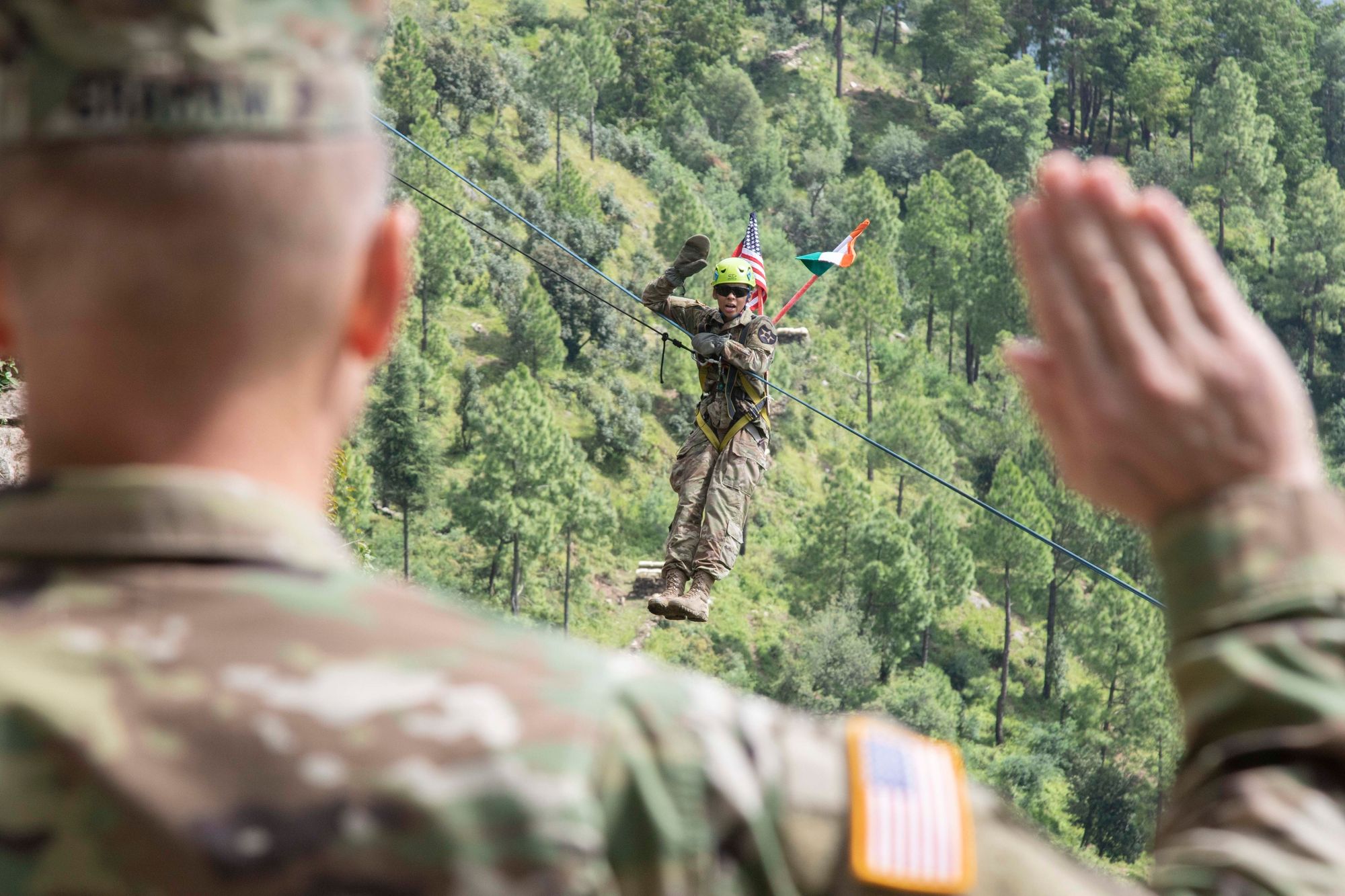
Operation Acharaj
With an intensification of the Ukraine crisis and the manner in which China abstained in the United Nations Security Council vote against Russia for its invasion of Ukraine, the scenario in Asia has altered considerably. The United States has put LERTCON2 on its Sixth Fleet, which is headquartered at Naval Support Activity Naples, Italy and it has been forced to rebalance its Seventh Carrier Group headquartered in Yokosuka, Japan to the Mediterranean Sea. These moves are emblematic of, albeit a temporary shift of strategic emphasis from the Indo-Pacific to Europe.
Within this crisis milieu, the PLA Navy (PLAN) is blockading the Malacca Straits, and has established a maritime posture in the South China Sea with an objective to alter its Malacca Dilemma. The United States and its strategic trading partners including Australia and the ASEAN countries have enormous stakes in keeping the straits open. President Biden’s announcement on 13 May 2022 to nominate Yohannes Abraham as Ambassador to the ASEAN emphasizes the US’ commitment to the region as also his administration’s seriousness to recalibrate American policy to counter to China’s rise in the region. In a clear reference to “China’s increasingly aggressive military actions in the South China Sea” Vice President Kamala Harris stated that the US and ASEAN have a shared vision for the region.

In the meantime, intelligence reports have also indicated that the PLAN base in Dalian has witnessed uncommon activity with not only Intruder satellite imagery showing heat blooms emanating from the vicinity of the Yulin Naval Base in Hainan, which houses its Type 093 Shang Class SSNs, but also frequent VSTOL practices by Shenyang J-15s from the aircraft carrier Liaoning. The scenario is analysed by America’s National Geospatial-Intelligence Agency, leading the US intelligence community to conclude that China is setting the conditions to invade Taiwan. Elsewhere in South Asia, China’s Western Theatre Command (WTC) has begun conducting military exercises in the Tibet Autonomous Region (TAR).
Within this backdrop, a secret meeting is convened between the Security Czars of India and the US on the side lines of the Abraham Accord summit to which New Delhi was invited. Given the duality of the concern in the South China Sea and TAR, the Security Czars of both countries agree that a response is needed to signal New Delhi and Washington’s combined resolve to deflect Beijing’s attention away from the South China Sea. A joint plan is scraped together by India’s security establishment and US Indo-Pacific Command (USINDOPACOM).
The INDOPACOM Commander has multiple options at his disposal to include repositioning naval assets as well as mounting exercises such as the multilateral ones like “Malabar”. Given US SF’s forward-deployed posture throughout Asia, the INDOPACOM Commander decides to re-mission a Special Forces Operational Detachment—Alpha (SFOD-A), on a routine training exercise similar to past Vajra Prahar drills in India, to launch an EW attack against a People’s Liberation Army (PLA) outstation. An EW assault was chosen because it couches the kinetic aspect of a strike as also provides a scenario whereby deniability can be justified even as the target itself is made fully aware of the attack.
This mission plays a small part in the USINDOPACOM campaign plan to pressure the Chinese into détente as the unexpected Indo-US attack would upset China’s Central military Commission’s “grand strategy” for world dominance as also leverage the combined Indo-US SF’s unique capacity to work together on a mission that gives Washington and New Delhi political cover via non-attribution. The Indo-US SF team—known as the Bandhus (Friends)—is well suited for an EW attack against the PLA communications hub.
After receiving the mission tasking, the Bandhus quickly deploy. Within 72 hours, the SFOD-A is supplied with man-portable EW equipment like the 180lbs CESAS II. The Bandhus also integrate Amdo Tibetan guerillas (with a history of working with Indian and American agencies), to provide cross-border intelligence and plan an infiltration route into the Eastern Ladakh territory across which the hitherto undetected PLA outstation is located.
Their plan is elegant: launching a coordinated multi-domain EW assault with the use of munitions only by way decoys against the Chinese base to highlight PLA ineptitude. The Amdos will initially serve as scouts and find two over watch sites with clear lines of visibility over the PLA outstation. One site is for the Amdos themselves, who will be tasked with using several commercially available drones to drop non-lethal munitions next to the PLA outstation. The drones will deliver their payload close enough to send the PLA soldiers into a frenzy—but far enough away so that it doesn’t cause bodily harm. The other hide site is for the Bandhus who will use their EW equipment to immediately jam all communications. The contingent’s hope is that the inexperienced Chinese troops will panic, and the Bandhus will be able to capture the entire affair using easily available recording devices like the GoPro Hero10 Black. Once the Bandhus obtain compromising footage, they will exfiltrate and send the film to a US-based information warfare cell and produce videos set to Benny Hill music meant to go viral. The objective of the operation is to undermine international perception of Chinese power and competence.
On the day of execution, the Bandhus depart from their Indian base in non-attributable clothing to avoid detection and prepare for Ladakh’s glacial conditions. The Amdos lead the element to its final reconnaissance site before departing to their own overwatch position. The Bandhus, aware that the target is near, establish a mission support site, erect their camera, reassemble the CESAS II, and enable the Amdos to maneuver into position.
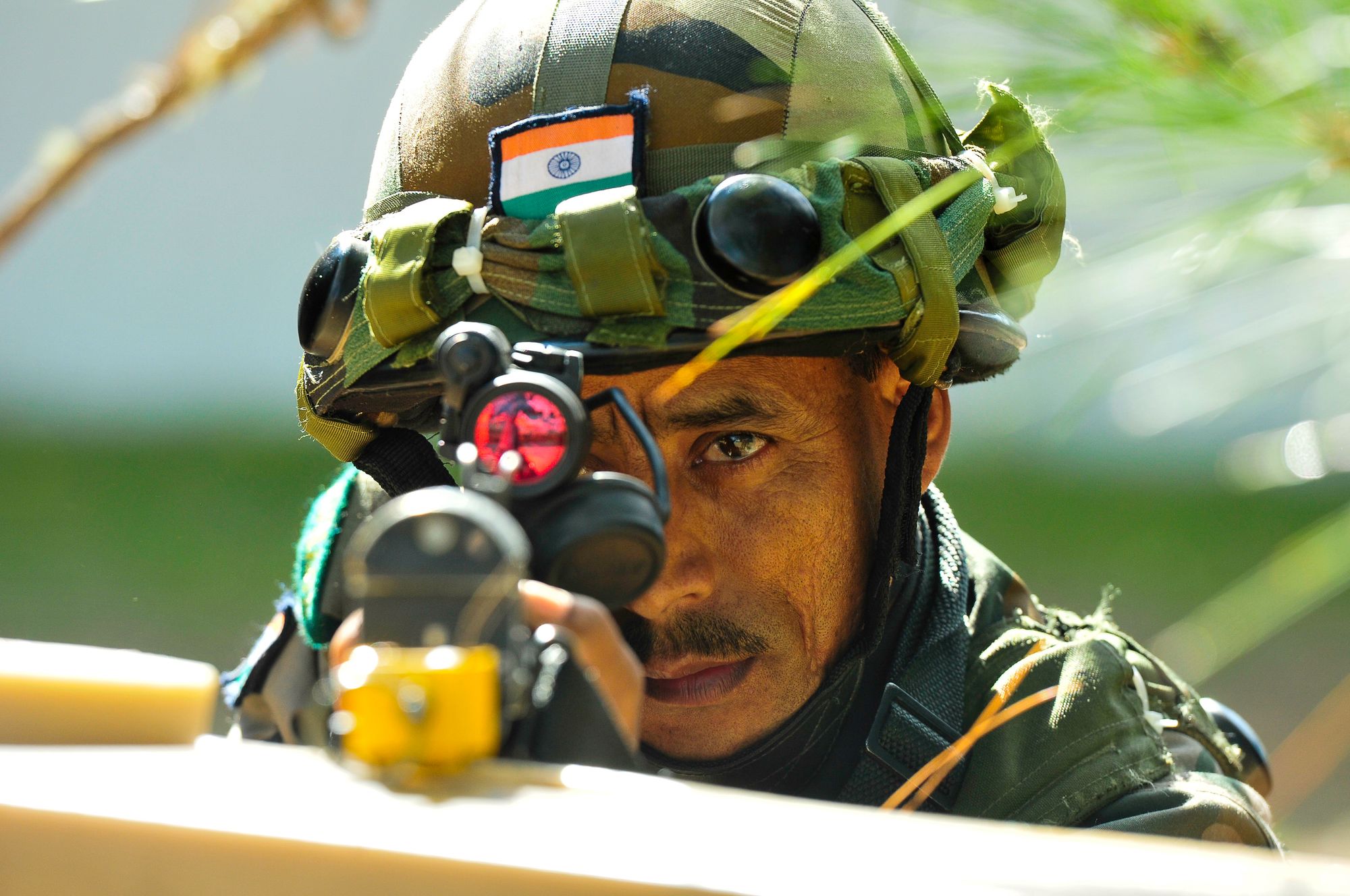
During the waxing hours of the following day, the Amdos deploy their drones. Their pre-sanitized DJI quadcopters have a range of 15 Km, and the Amdos are able to fly the drones in a circuitous route that doesn’t give away their position. One of the drones collides with an errant rock face and is rendered ineffective, but the remaining drones reach their destination and drop their payload close to the base. The drones then enter into an ominous holding pattern, and loiter within earshot of the PLA garrison.
The Bandhus take the explosion as their queue and use the CESAS II to jam all communications. The remotely operated drones are immediately affected and tumble to the permafrost, but it does not matter. The quadcopters, which were made by a Chinese company, could have been used by anyone. A further test of the Bandhus’ internal radios shows that the EW equipment is working; all communications that use modern modular schemes and operate on ultra-high frequency ranges are rendered ineffective. The PLA troops act with predictable incompetence, frantically yelling into radios that do not work and taking over two hours to reconnoiter the detonation site. The Bandhus capture the turmoil on their cameras, disassemble their equipment, sanitize their location, and exfiltrate.
After a slow-moving journey back down the serrated goat trails, the Bandhus link-up with their Amdos, and transmit the data to a US information operations team. The PLA outstation regroups and informs their headquarters in Chengdu of the incident, but the damage is done. The film is laboriously analyzed by the US and Indian intelligence, edited by experts, and released to open source news channels across the globe. The images go viral, with numerous themes mocking the Chinese military and its blatant disregard for the sovereignty of other countries. The embarrassing footage is a footnote in the INDOCPACOM Commander’s broader plan, but it feeds into a broader narrative of Indo-US solidarity, and forces Beijing to recalculate its unfettered ambition of overrunning the entire Indian Ocean Region.
The CMC’s response is predictable: They block the video from appearing on popular apps like Weibo and WeChat, internally reprimands the PLA’s top brass, and publicly prevaricates on the incident—writing it off as a preplanned military drill. New Delhi and Washington maintain plausible deniability, but tacitly signal that proxy forces are prepared to escalate their actions in China’s Western Theatre Command should Beijing continue its saber rattling.
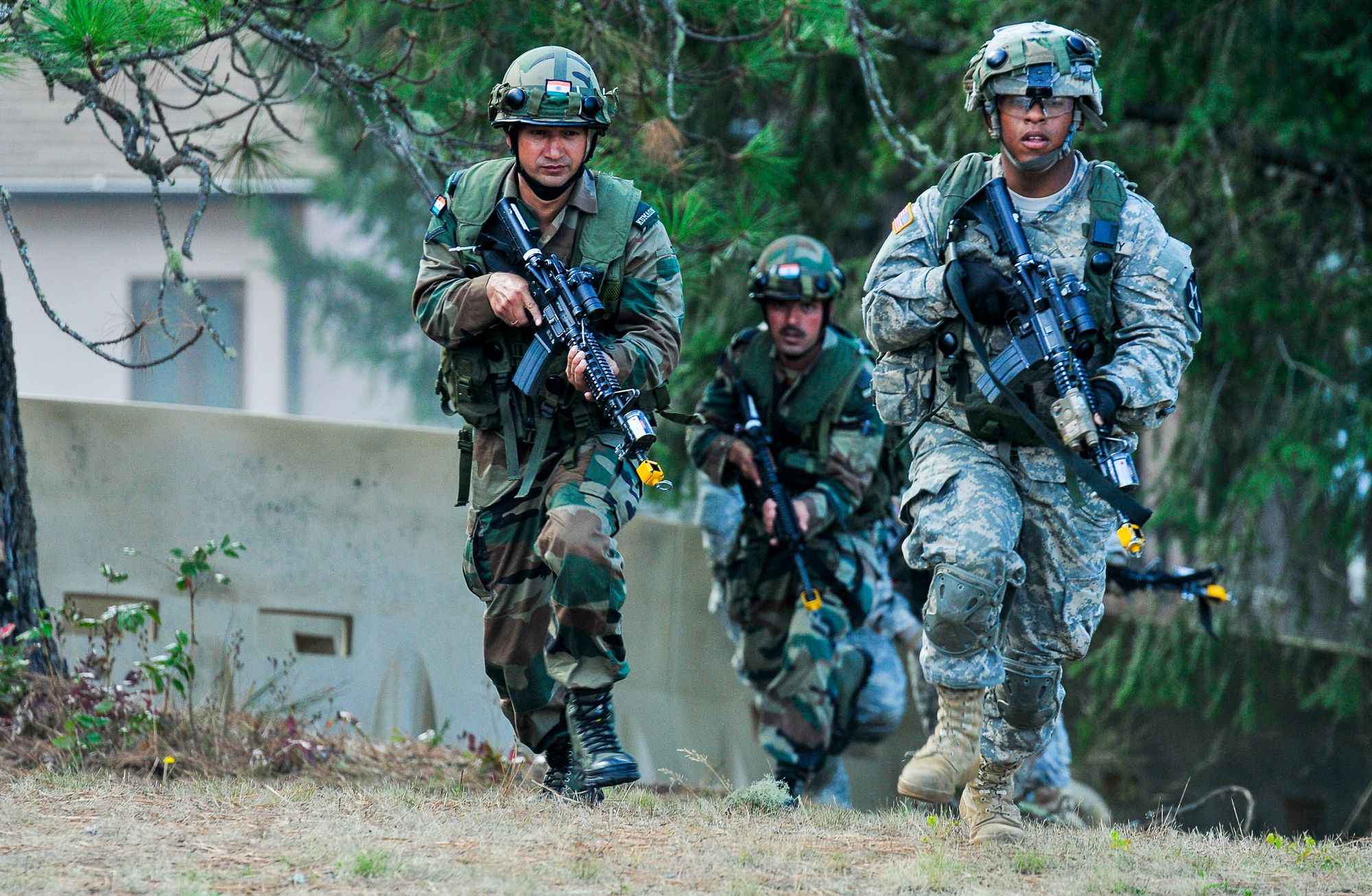
Takeaways from the Hypothetical Scenario
A New Battlespace means that information shaping operations are all about achieving strategic effects, without engaging in a conventional war. With these lessons in mind, the hypothetical Operation Acharaj offers tangible policy implications:
- Military security cooperation programs and a forward deployed presence matter. Offshore balancers see security cooperation as an overextension that wastes precious resources. However, China’s rapid militarization of the Western Pacific could soon jeopardize the US military’s ability to deploy forces to Asia during a crisis. It is thus both prudent and imperative that the US keeps a forward presence in Asia via security cooperation programs that offer access to vital partners in anticipation of sudden Chinese intimidating moves.
- Indo-American military cooperation is a deterrent. A mission like Operation Acharaj would make China wary of Indo-American military capabilities and force the CMC to recalibrate its sights. Furthermore, the manner in which the operation was engineered would negate the possibility of any provocation. In an era where even the PRC is becoming increasingly image conscious the obvious question would be “why”! Therefore, even as Acharaj acts both as an unambiguous message and as a deterrent, it prevents Beijing from making moves that would be viewed the world over as uncalled for belligerence.
- Stave off anti-India comments by Beijing in international forums. The possibility of future combined strikes against PLA targets would compel Beijing to reassess the manner in which it has been commenting on Kashmir in various fora. China might also reconsider pledging mutual “political trust” with anti-India and anti-US terrorists such as Sirajuddin Haqqani of the Taliban.
- Force Beijing to revisit the India-China Boundary. The PRC might also recalculate and steer clear of any future adventurism along the India-China border. Increased Indo-American cooperation could bring China to the negotiating table to better demarcate the entire 3,488 Km-long India-China border based on an equitable East-West Swap. In other words, the India-China border region would be settled once and for all based on iron-clad parameters—namely the “as-is-where-is basis or the “Line of Amity”. A close reading of history states that Beijing has always made “swap” overtures to New Delhi when it was economically and militarily weak. Op Acharaj and the unity with which an Indo-US duality of agenda was exhibited would put it once again on an even keel with India.
In sum, an isolated but well calibrated Indo-US mission would act as a “game-changer” in the geopolitical arena where China is attempting to take centre-stage. The “two-plus-two” plan of action has already laid the foundation for a “shared commitment” and access “new opportunities to extend the operational reach of the (two) militaries.” A hypothetical but completely plausible Op Acharaj could well provide the template for a real-time situational employment for a scenario that could soon become a reality.
Cover photo: Staff Sgt. Mylinda Durousseau/US Army

